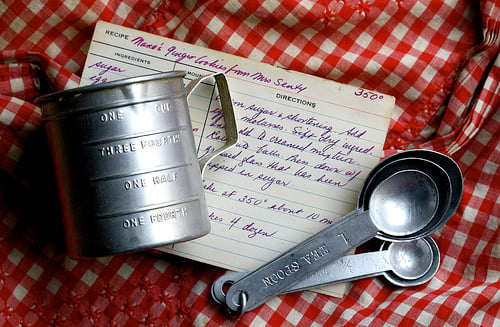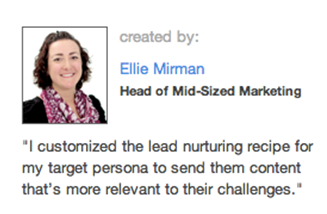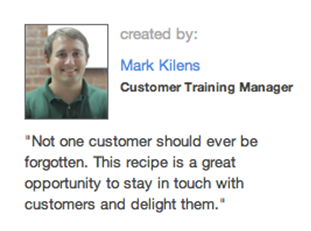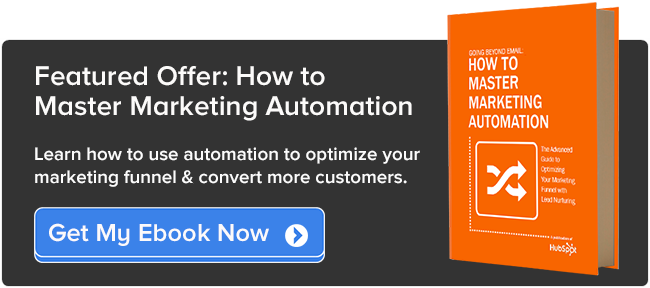Which Of The Following Is Not True About Email Marketing
Many marketers stick to mass emails, because they are limited by technology. Much of email segmentation and lead nurturing is only made possible through marketing automation software and contacts databases. But even for those who have the software, finding the right lead nurturing strategy is a tough one. There's a great Genius/Focus study from last year that underscores this very issue. The report, which surveyed marketers across industries, found that more than 50% of respondents said they had not yet realized the value of their investment in marketing automation. Yikes! In our marketing at HubSpot, we drink our own Kool-Aid and use our own marketing automation software, and in doing so, we've uncovered a set of core lead and customer nurturing "recipes" that are especially effective at nurturing our visitors from prospects to leads to customers to evangelists. And, since our parents taught us to share … we thought we'd let you in on our list. We think it will help those of you who are still trying to understand the benefit of an investment in marketing automation software to wrap your heads around how simple and effective workflows can be for your marketing strategy. If you're not sure how automated workflowswork, check out this simple workflow setup guide first. Just because someone subscribes to your blog or newsletter doesn't mean they're immediately ready for a call from your sales team -- no matter how friendly Jason or Julie is on the phone. Subscribers are, by nature, passive. They want an un-intrusive and gradual way to get to know your content and your business. As a result, they opt to stay connected through email. Because of that, your follow-up emails to them should be content-focused and built toward the goal of a second content conversion on your site. The workflow recipe below contains two emails, and the contacts who are enrolled in it will go through two attempts to convert and move on to the next lifecycle stage: that of a lead. You may have all the information you need about an individual in order to properly assign them to a sales rep, but not all leads are ready for sales right away. In fact, MarketingSherpa found that 61% of B2B marketers send all leads directly to Sales, but only 27% of those leads are actually qualified or ready to talk to Sales. This recipe was designed to nurture your leads to the point at which a conversation with Sales would be most productive. Once a contact converts into a customer, you can also enroll them in a customer nurturing workflow. Customer nurturing workflows should be helpful in nature and aimed at helping your customers get the most out of your product or service. Do you know who your company's biggest evangelists are? You know -- the people who continually come back to your website to consume your content, and regularly share it with their contacts and social networks? This will help you identify and nurture the individuals who help your company expand its reach. Beginning with these starter recipes, you can start to segment your list into smaller, more manageable sizes, and send emails that are more relevant to each recipient. Once you test these out, you can add new ingredients and mix and match your own targeted sends. Try out email sends based on the last page a lead visited or their past content interests. Maybe try an internal notification whenever a strong lead looks at your pricing page. For more ideas of different workflows you can set up to nurture your leads and customers, check out our post, "12 Automated Email Workflows You'll Kick Yourself for Not Using." Each of these sends can help you get to more tailored, relevant marketing and emails that may not languish unread in your recipients' inboxes. Do you have automated workflows set up? What kinds of results are you benefiting from? Image Credit: Muffet  Research from MarketingSherpa shows that the email marketing strategy for most B2B marketers still predominantly revolves around sending mass emails to a marketer's entire mailing list. You're familiar with mass emails, right? Those things you almost always delete from your own inbox?
Research from MarketingSherpa shows that the email marketing strategy for most B2B marketers still predominantly revolves around sending mass emails to a marketer's entire mailing list. You're familiar with mass emails, right? Those things you almost always delete from your own inbox? Workflow Recipe #1: Nurture Subscribers Into Leads
 Key Ingredients:
Key Ingredients:
Directions:
Workflow Recipe #2: Nurture Leads Into Marketing Qualified Leads
 Key Ingredients:
Key Ingredients:
Directions:
Workflow Recipe #3: Nurturing Customers
 Key Ingredients:
Key Ingredients:
Directions:
Workflow Recipe #4: Nurturing Evangelists
Key Ingredients:
Directions:



Originally published Apr 5, 2013 2:00:00 PM, updated February 01 2017
Which Of The Following Is Not True About Email Marketing
Source: https://blog.hubspot.com/marketing/proven-marketing-automation-recipes
Posted by: smithglight.blogspot.com

0 Response to "Which Of The Following Is Not True About Email Marketing"
Post a Comment